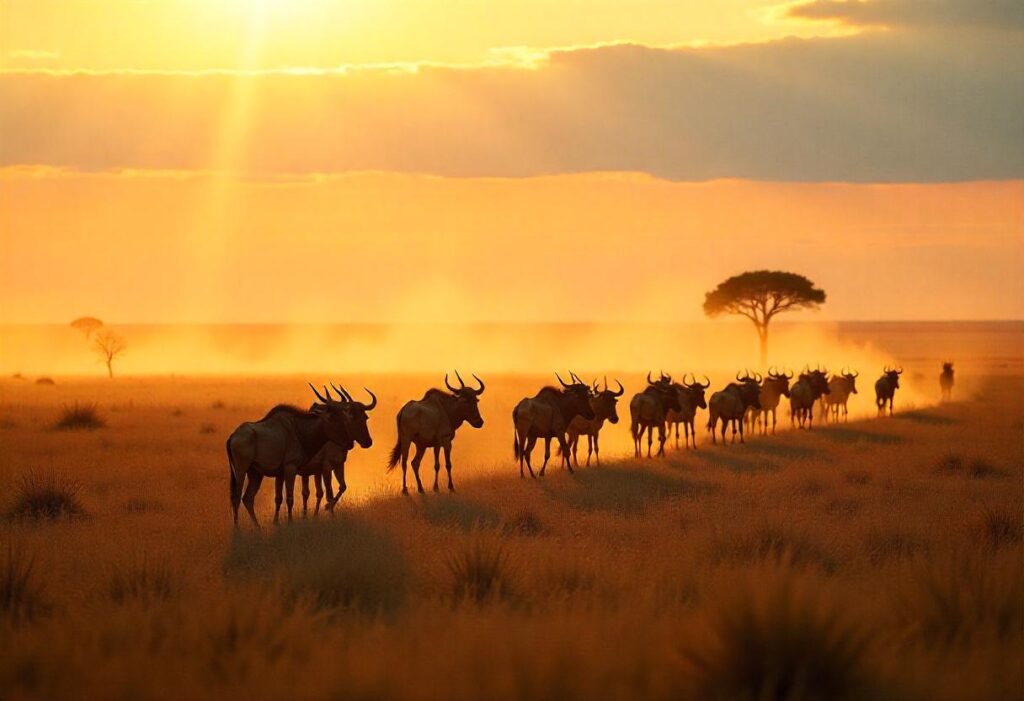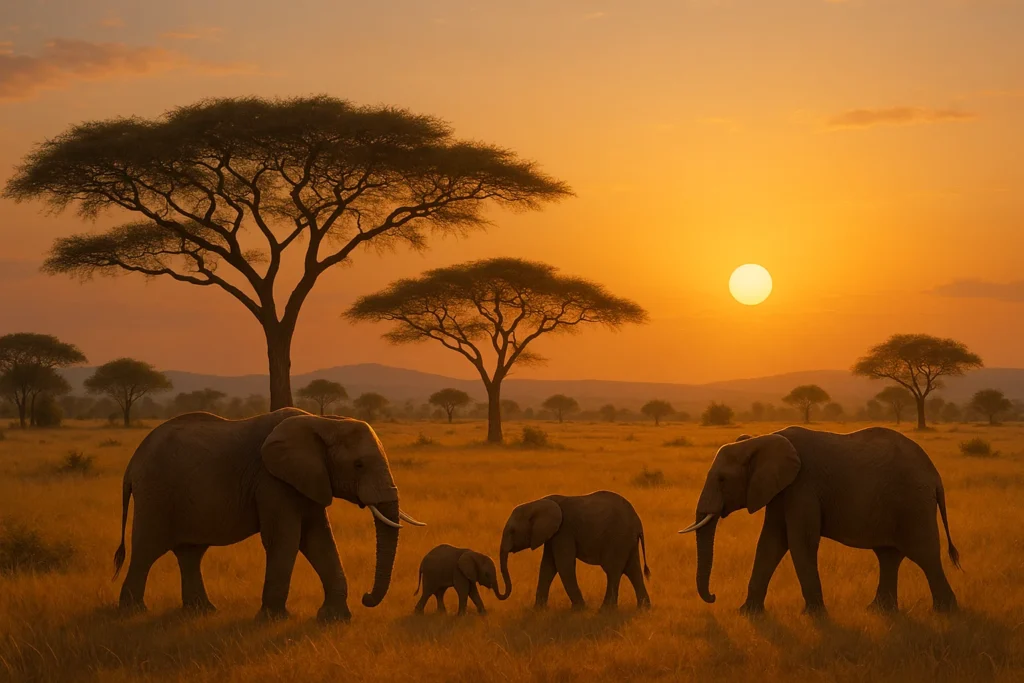The Great Migration is one of the most breathtaking wildlife spectacles on Earth. Each year, over two million wildebeest, zebras, and gazelles make a circular journey through Tanzania and Kenya in search of fresh grazing. Knowing when and where to go is key to witnessing the most dramatic moments of this natural phenomenon.
What is the Great Migration?
The Great Migration is a year-round movement of animals across the Serengeti (Tanzania) and the Maasai Mara (Kenya). Driven by rainfall and the search for food, the cycle includes dramatic river crossings, calving seasons, and predator-prey interactions that draw travelers from all over the world.
Month-by-month migration calendar
January to March: Calving season in the southern Serengeti
- Location: Ndutu region, Southern Serengeti, Tanzania
- What to see: Thousands of wildebeest give birth on the open plains. This is prime predator activity time, as lions, cheetahs, and hyenas take advantage.
- Why go: Excellent for photography and witnessing the circle of life in action.
April to May: The herds head north
- Location: Central and Western Serengeti
- What to see: Columns of animals on the move. Rains make this area lush, but some camps may close due to muddy conditions.
- Why go: Fewer crowds and dramatic landscapes.
June to July: Grumeti River crossings
- Location: Western Serengeti
- What to see: Wildebeest begin risky river crossings at the Grumeti River, where crocodiles lie in wait.
- Why go: The action starts to intensify; this is the beginning of the most famous migration scenes.
July to August: Mara River crossings
- Location: Northern Serengeti and Maasai Mara
- What to see: Iconic Mara River crossings, where thousands of animals plunge into the crocodile-filled waters.
- Why go: Peak migration time. Book early — this is the most popular period to witness the migration.
September to October: Grazing in the Maasai Mara
- Location: Maasai Mara, Kenya
- What to see: Herds settle in Kenya’s green plains. Predators are still active and easy to spot.
- Why go: Excellent weather and game viewing. Consider private conservancies for fewer crowds.
November to December: Return to the Serengeti
- Location: Eastern and Southern Serengeti
- What to see: The herds begin their return south, completing the migration loop.
- Why go: Short rains refresh the landscape. Wildlife viewing is still strong, with fewer tourists.
Best times to visit for specific experiences
For dramatic river crossings
When: July to August
Where: Mara River, Northern Serengeti & Maasai Mara
For predator action during calving
When: January to March
Where: Southern Serengeti, especially around Ndutu
For fewer crowds and lush landscapes
When: April to May and November
Where: Central and Eastern Serengeti
Tips for planning your Great Migration safari
- Book early: Especially for July–October, camps fill fast.
- Stay mobile: Consider fly-in safaris or mobile camps that follow the herds.
- Travel with an expert guide: Maximizes your chance of being in the right place at the right time.
- Combine regions: To increase your chances of witnessing key events like a river crossing.
Final thoughts
The Great Migration is more than a single event — it’s a continuous journey that offers something unique each month. Whether you want the drama of a river crossing or the emotional intensity of calving season, timing your trip right will ensure a once-in-a-lifetime safari.
Frequently asked questions about the Great Migration
The best way to see the Great Migration is through a guided safari with a reputable operator. Fly-in safaris, mobile camps, or private conservancies allow greater access and flexibility to follow the herds in real time.
While the general pattern remains the same, the exact timing can vary slightly each year due to rainfall patterns and climate conditions. It’s best to consult with a safari expert who tracks the herds’ movements before planning your trip.
The Great Migration is a continuous, year-round cycle. While dramatic events like river crossings happen in specific months, the animals are always on the move through different parts of the Serengeti and Maasai Mara.
Yes, balloon safaris over the Serengeti or Maasai Mara offer a spectacular view of the migration from above, especially during the calving season or when herds gather in large numbers on the plains.
Wildebeest make up the majority of the herds, but the migration also includes around 200,000 zebras and 500,000 Thomson’s gazelles, along with predators like lions, cheetahs, and hyenas that follow the herds.
The Serengeti covers the majority of the migration cycle and includes calving and early movements. The Maasai Mara is crucial during the mid-to-late stages, especially for the famous Mara River crossings. Both offer unique viewing experiences.
Yes, as long as you travel with a licensed safari operator and follow expert guidance. Safari destinations in Tanzania and Kenya are well-prepared to welcome travelers, and health and safety standards are high in top lodges and camps.






